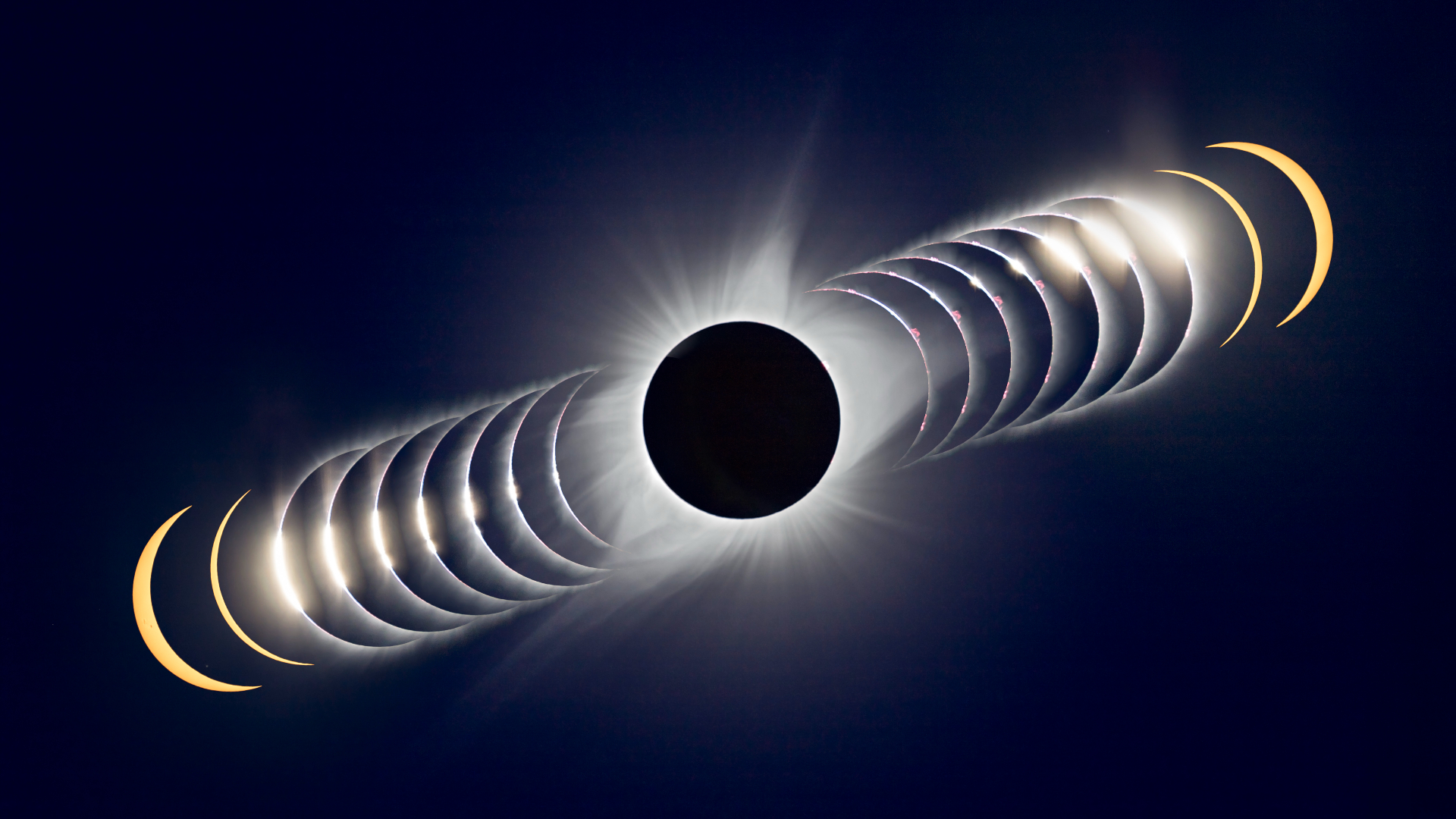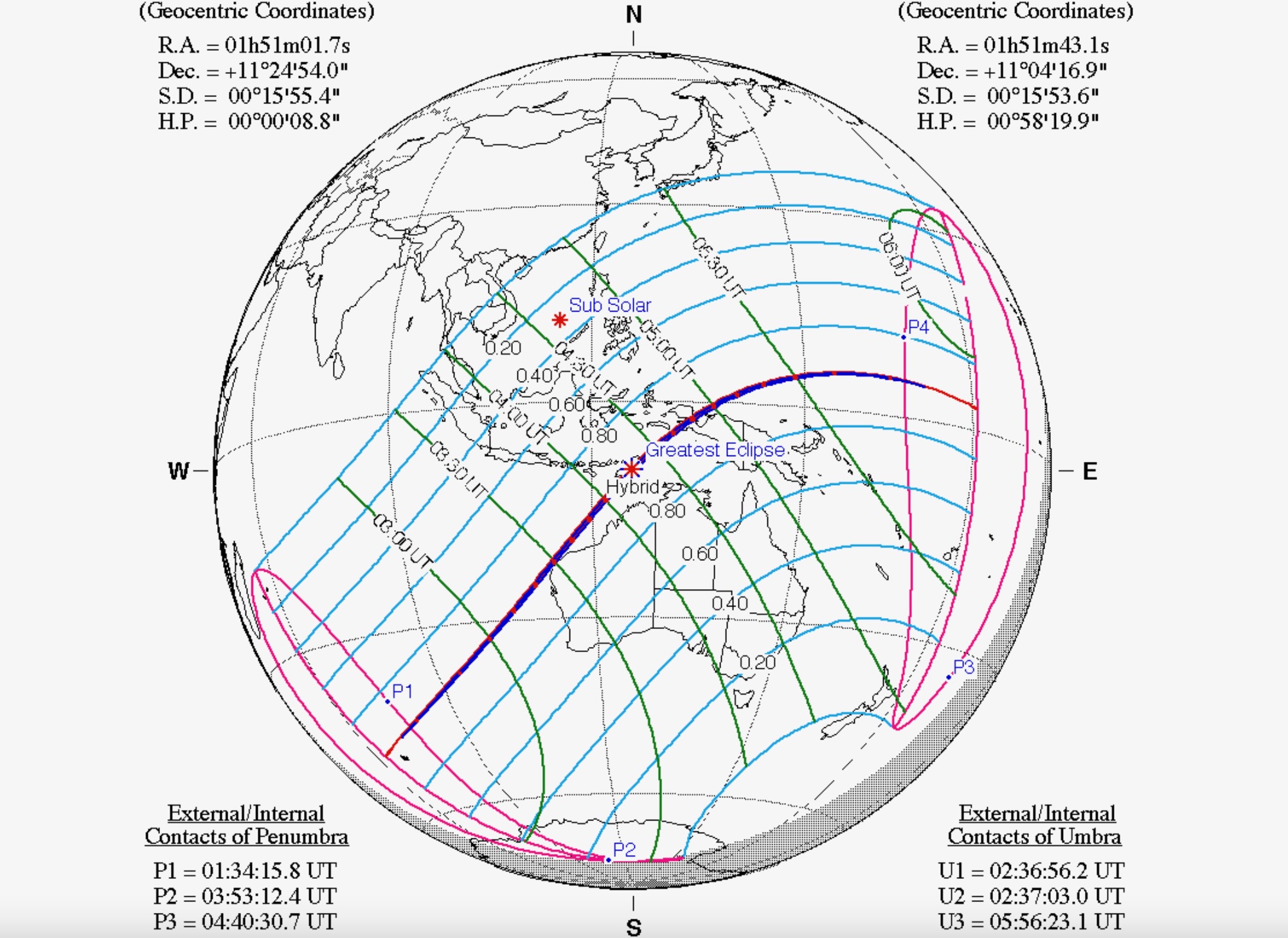What time is the rare hybrid solar eclipse on April 20?
Mark your calendars for this rare event.

On April 20, 2023, there will be a rare hybrid solar eclipse.
Unfortunately for the vast majority of the world, it won't be observable. However, for those in Western Australia, East Timor, and the eastern Indonesian islands, get ready to see the show of a lifetime.
This eclipse is known as a hybrid eclipse because it will shift from a total eclipe to an annular solar eclipse as the moon's shadow races over Earth. For some locations in the solar eclipse's path, viewers will witness a total solar eclipse, whereas in other parts, they'll witness the ring-like annular solar eclipse. In both cases, the moon will pass between the Earth and the sun, blocking out all or most of the sun's light across a portion of the Earth's surface.
If you want to watch this rare celestial spectacle for yourself, make sure to check out our guide on how to watch the hybrid solar eclipse online for free.
Related: Hybrid solar eclipse: Everything you need to know about the rare and strange phenomenon
The eclipse will begin at 9:36 p.m. EDT on April 19 (0136 GMT on April 20) and end at 2:59 a.m. EDT (0659 GMT) on April 20, according to In the Sky. Because the eclipse will be visible first in the Indian Ocean and then over the Pacific, it will already be April 20 local time during the event.
Totality will occur in the following locations and times:
Get the Space.com Newsletter
Breaking space news, the latest updates on rocket launches, skywatching events and more!
- Western Australia: From 10:29 p.m. to 10:35 p.m. EDT on April 19 (0229 to 0235 GMT on April 20)
- East Timor: From 11:19 p.m. to 11:22 p.m. EDT on April 19 (0319 to 0322 GMT on April 20)
- Indonesia: From 11:23 p.m. to 11:58 p.m. EDT on April 19 (0323 to 0358 GMT on April 20)

There are just two locations on Earth that will be able to witness the eclipse transition from annular to total before transitioning back to annular again. However, these locations are unfortunately in the middle of the ocean.
If you happen to be in one of the regions where the solar eclipse is observable, remember not to look into the sun with the naked eye; be sure to take proper precautions when viewing the event.
And if you're tuning in from elsewhere in the world, don't worry — you can safely observe the solar eclipse from a screen. Timeanddate.com, for instance, will be streaming the solar eclipse live, which you can watch here.
The last hybrid eclipse occurred nearly 10 years ago, on Nov. 3, 2013, and the next hybrid solar eclipse will occur in November 2031 and will be visible from some parts of the continental United States.
After that opportunity, the next time Earthly skywatchers will get to see a hybrid eclipse is on March 23, 2164.
Editor's Note: If you snap an image of the eclipse and would like to share it with Space.com's readers, send your photo(s), comments, and your name and location to spacephotos@space.com.
Follow Stefanie Waldek on Twitter @StefanieWaldek. Follow us on Twitter @Spacedotcom and on Facebook.
Join our Space Forums to keep talking space on the latest missions, night sky and more! And if you have a news tip, correction or comment, let us know at: community@space.com.

Space.com contributing writer Stefanie Waldek is a self-taught space nerd and aviation geek who is passionate about all things spaceflight and astronomy. With a background in travel and design journalism, as well as a Bachelor of Arts degree from New York University, she specializes in the budding space tourism industry and Earth-based astrotourism. In her free time, you can find her watching rocket launches or looking up at the stars, wondering what is out there. Learn more about her work at www.stefaniewaldek.com.









